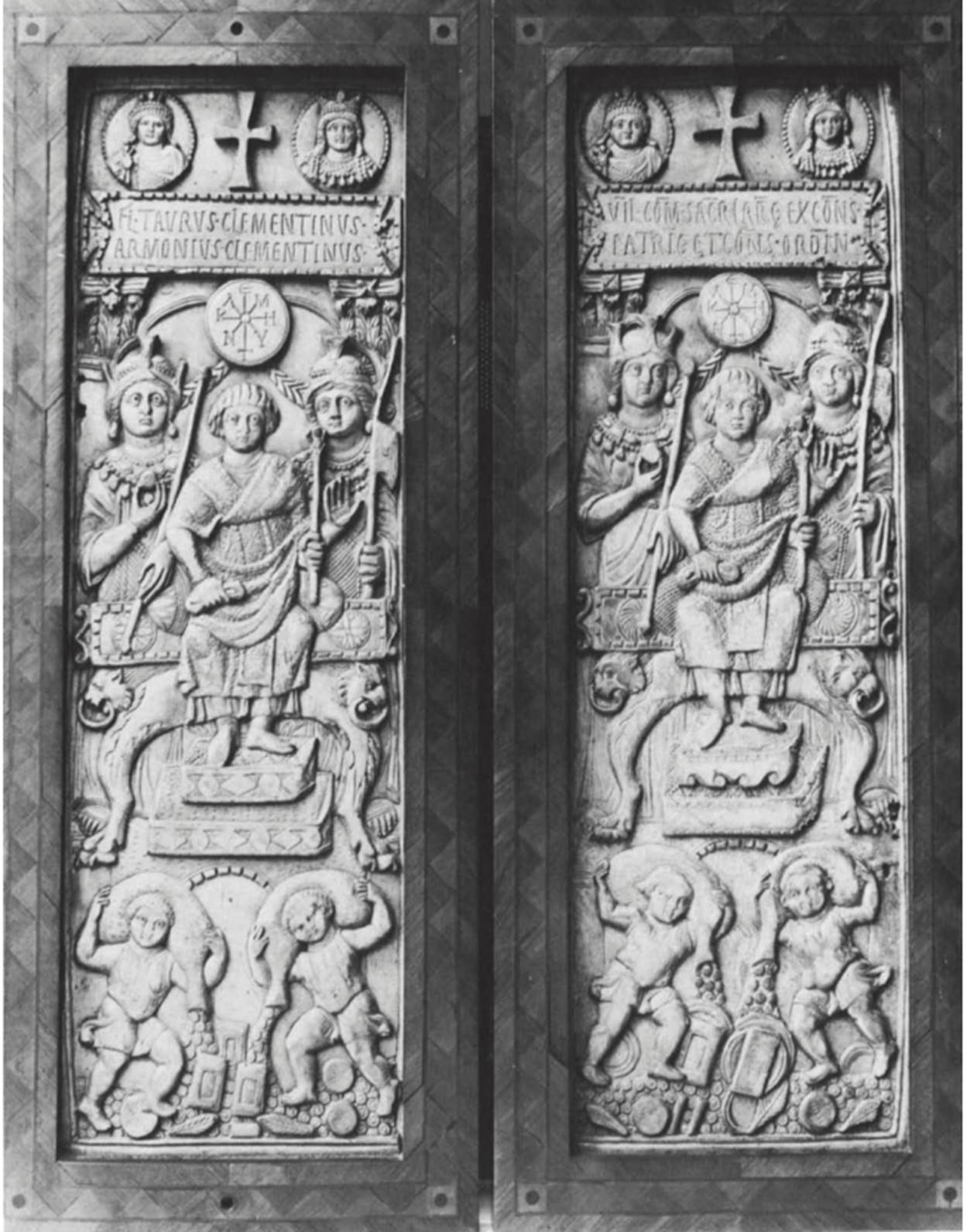Diptych of the consul Clementinus. Constantinople, 513. Ivory
In 513 the consul for the East was Flavius Taurus Clementinus, whose name is inscribed on the front of the diptych: FL(avius) tavrus clementinvs armonivs clementinvs. From the inscription on the rear leaf, v(ir) iL(lustris) coM(es) SACR(arum) LARG(itionum) EX CONS(ule) PATRic(ius) ET CONS(ul) ORDiN(arius), we know that Clementinus served as imperial finance minister, but we have no further information about him.
Each leaf contains the same scene: the enthroned consul, dressed in triumphal regalia, holding the mappa in his right hand and a scepter crowned with a portrait bust of the emperor Anastasius in his left, appears in his tribune on the second level of the circus. On the floor of the arena, two young slaves in short tunics pour out coins from leather sacks. Scattered among the coins are pieces of silver plate and palms given as prizes at the races and other competitions sponsored by the incoming consul. As he supervises the sparsio from his box, Clementinus is flanked to the left by the personification of Rome holding a trochiskos and to the right by the personification of Constantinople holding the fasces, on whose blade is a portrait of the consul.

Hanging from the crown of the arch above Clementinus' head is a round shield containing his name in Greek letters in a star monogram. The architrave surmounting the columns has been transformed into an ansate tablet for the inscription. Flanking the cross above the inscription are the two clipeate portraits—that of the emperor Anastasius, left, and the empress Ariadne, right—that were placed above the consul when he appeared in the arena.
Clementinus appears to be a middle-aged man with a short, sparse beard. His hair is thick and straight and in the typical bowl cut of the period. A certain facial type predominates among the heads, typified by slightly oval, fleshy contours with prominent noses, emphatic, protruding eyes, and sharply arching brows and upper lids.
Inscription inside indicates that the diptych was in use in eighth century in Magna Graecia; purchased in Nuremberg by the father of G. P. Negelinus prior to 1742; by 1798 in collection of Count Wiczay in Hedervar; by 1856 in collection Fejervary; collection Joseph Mayer; donated in 1867 to Liverpool by Mayer.
Bibliography: Delbrueck, 1929, no. 16; Volbach, 1976, no. 15; Bovini and Ottolenghi, 1956, no. 58 (1st ed.), no. 57 (2nd ed.).
Date added: 2025-07-10; views: 162;
